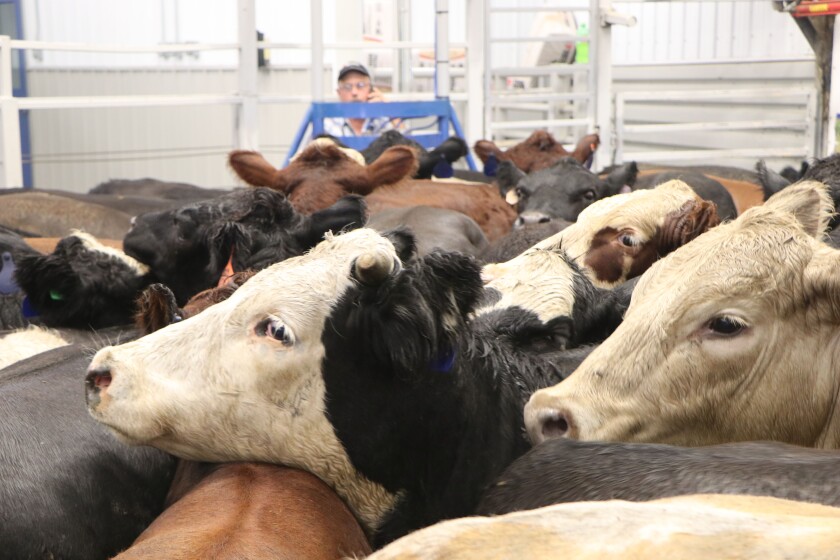Proactive Protection: Bagley Risk Management Techniques
Proactive Protection: Bagley Risk Management Techniques
Blog Article
Recognizing Animals Danger Security (LRP) Insurance Policy: A Comprehensive Overview
Browsing the realm of animals danger defense (LRP) insurance coverage can be a complicated undertaking for many in the agricultural industry. From exactly how LRP insurance policy operates to the numerous coverage options offered, there is much to discover in this detailed guide that could potentially shape the method animals producers approach threat administration in their companies.

Just How LRP Insurance Coverage Works
Occasionally, understanding the mechanics of Animals Threat Security (LRP) insurance coverage can be complicated, but breaking down just how it works can provide quality for farmers and herdsmans. LRP insurance coverage is a risk monitoring tool developed to shield animals producers versus unanticipated cost decreases. The plan allows manufacturers to set a protection degree based on their details demands, selecting the number of head, weight variety, and insurance coverage cost. Once the policy is in area, if market rates fall below the insurance coverage price, manufacturers can file an insurance claim for the distinction. It is essential to keep in mind that LRP insurance coverage is not a revenue assurance; rather, it focuses only on price danger protection. The insurance coverage duration commonly ranges from 13 to 52 weeks, providing versatility for manufacturers to select a period that lines up with their production cycle. By making use of LRP insurance policy, farmers and herdsmans can alleviate the financial dangers connected with varying market rates, guaranteeing higher security in their procedures.
Eligibility and Protection Options

When it pertains to coverage alternatives, LRP insurance policy provides manufacturers the adaptability to choose the protection level, protection duration, and endorsements that ideal match their danger management demands. Coverage levels typically vary from 70% to 100% of the expected ending worth of the insured livestock. Manufacturers can also pick protection durations that straighten with their manufacturing cycle, whether they are guaranteeing feeder livestock, fed cattle, swine, or lamb. Endorsements such as cost danger defense can further customize coverage to secure versus adverse market changes. By recognizing the qualification criteria and protection alternatives offered, animals producers can make educated choices to manage risk successfully.
Advantages And Disadvantages of LRP Insurance
When evaluating Livestock Risk Security (LRP) insurance policy, it is crucial for animals manufacturers to evaluate the advantages and downsides intrinsic in this danger administration tool.

Among the key advantages of LRP insurance policy is its ability to give protection versus a decrease in livestock costs. This can aid protect producers from financial losses arising from market variations. Additionally, LRP insurance provides a degree of adaptability, enabling manufacturers to customize insurance coverage levels and plan periods to suit their details requirements. By securing a guaranteed cost for their animals, producers can better handle threat and strategy for the future.
One constraint of LRP insurance coverage is that it does not safeguard against all types of threats, such as condition break outs or natural calamities. It is critical for producers to thoroughly assess their specific danger exposure and more info here economic circumstance to determine if LRP insurance policy is the ideal risk administration tool for their procedure.
Comprehending LRP Insurance Coverage Premiums

Tips for Making The Most Of LRP Perks
Making best use of the advantages of Animals Danger Security (LRP) insurance coverage calls for critical preparation and aggressive risk administration - Bagley Risk Management. To make the many of your LRP coverage, consider the complying with ideas:
On A Regular Basis Evaluate Market Problems: Stay notified about market patterns and rate fluctuations in the animals sector. By checking these elements, you can make informed decisions concerning when to buy LRP insurance coverage to protect versus prospective losses.
Establish Realistic Coverage Degrees: When choosing insurance coverage degrees, consider your manufacturing prices, market price of animals, and possible dangers - Bagley Risk Management. Establishing realistic coverage degrees makes certain that you are effectively shielded without paying too much for unnecessary insurance coverage
Diversify Your Protection: As opposed to relying exclusively on LRP insurance coverage, think about expanding your risk monitoring strategies. Combining LRP with various other danger administration tools such as futures agreements or choices can offer extensive coverage versus market uncertainties.
Review and Readjust Protection Regularly: As market problems alter, periodically review your LRP insurance coverage to guarantee it straightens with your existing danger exposure. Readjusting protection levels and timing of acquisitions can help enhance your risk defense method. By following these pointers, you can take full advantage of the benefits of LRP insurance and guard your livestock procedure against unforeseen threats.
Conclusion
To conclude, livestock threat protection (LRP) insurance is a beneficial device for farmers to manage the economic threats connected with their livestock procedures. By recognizing how LRP functions, qualification and protection choices, along with the benefits and drawbacks of this insurance, farmers can make informed choices to shield their incomes. By very carefully thinking about LRP costs and applying strategies to maximize benefits, farmers can alleviate possible losses and make certain the sustainability of their procedures.
Livestock producers interested in obtaining Animals Threat Protection (LRP) insurance coverage can explore a variety of eligibility requirements and coverage options customized to their click to read specific livestock procedures.When it comes to coverage options, LRP insurance supplies producers the adaptability to select the coverage degree, coverage duration, and recommendations that ideal suit their danger administration requirements.To comprehend the details of Animals Threat Defense (LRP) insurance policy totally, recognizing the variables affecting LRP insurance coverage premiums is critical. LRP insurance premiums are figured out by various elements, page including the protection degree chosen, the expected cost of animals at the end of the protection duration, the type of animals being insured, and the size of the insurance coverage period.Review and Adjust Insurance Coverage Regularly: As market conditions change, occasionally examine your LRP protection to guarantee it lines up with your current threat exposure.
Report this page